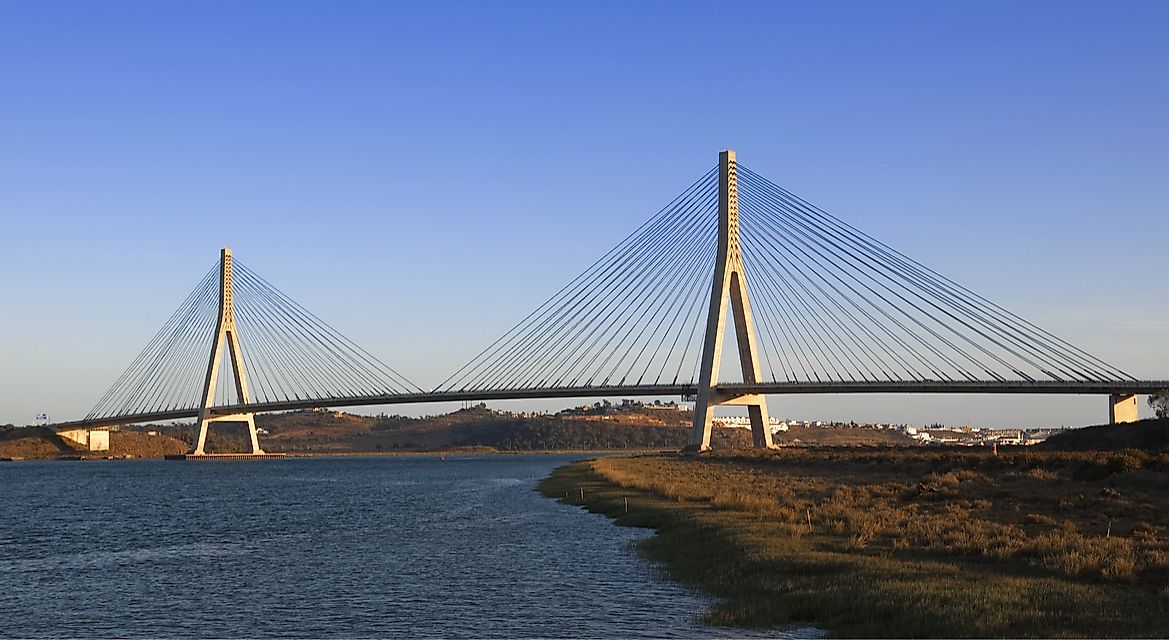Which Countries Border Portugal?

Portugal's 754-mile land border is shared by only one country: Spain. However, the two countries dispute the definitions of this international border. Portugal recognizes the border to be 754 miles in length, while Spain claims the border has a length of 765 miles. The difference emanates from the Olivenca region, whose ownership has been contested by the two countries for approximately 200 years. The Portugal-Spain border was first demarcated in the 10th century during the establishment of Portugal, as defined by the 1143 Treaty of Zamora, making it among the world’s oldest international borders. The most recent revision to the international border was made in 1926 during the Convention of Limits. The two countries ratified the Schengen Agreement in March 1995, which included the removal of border controls along the border for free cross-border movement. However, in recent years border controls have been temporarily reinstated for security reasons, such as when Portugal hosted the UEFA Euro Football tournament in 2004, and as well as during the Pope’s visit to Portugal in 2017.
Description
Ten districts of Portugal are found along the border, and these are, from south to north: Faro, Beja, Evora, Portalegre, Castelo Branco, Guarda, Braganca, Vila Real, Braga, and Viana do Castelo. The seven provinces of Spain that touch the international border as, listed from south to north: Huelva, Badajoz, Caceres, Salamanca, Zamora, Ourense and Pontevedra. There are several border crossings found along the border, including two bridges that span across the international border, which are the Lower Guadiana International Bridge and the Guadiana International Bridge. The border also features a cross-border zipline that links the Portuguese town of Alcoutim to Sanlucar de Guadiana, Spain. The zipline is the first and only to cross an international border.
Territorial Disputes
Despite sharing the long land border, Spain and Portugal have been entangled in territorial disputes for many years over portions of the international border. The Olivenca region has been in the middle of international tug-of-war between the two countries for over two centuries. Olivenca was initially part of Portugal, as established by the 1297 Treaty of Alcanices. However, Spain would later cede the Olivenca region in the 1801 Treaty of Badajoz, and despite promising to return it to Portugal in the 1815 Congress of Vienna, the region remains part of Spain. The two countries also have an ongoing territorial disputes over Portugal’s Exclusive Economic Zone, found within Portugal’s maritime territory. Spain disputes the southern border of the Exclusive Economic Zone, stating it should not encompass the Savage Islands, and the border should instead be located halfway between the Canary Islands and Madeira.
Couto Misto
Couto Misto was a microstate that existed along the Portugal-Spain international border, occupying an area of 10 square miles. The microstate was founded in the 10th century and remained independent until the signing of the 1864 Treaty of Lisbon that resulted in the annexation of its territory, which was shared by Portugal and Spain. Based on the treaty, Portugal received the uninhabited southern portion of the microstate, while Spain received the northern territory that included three villages.











